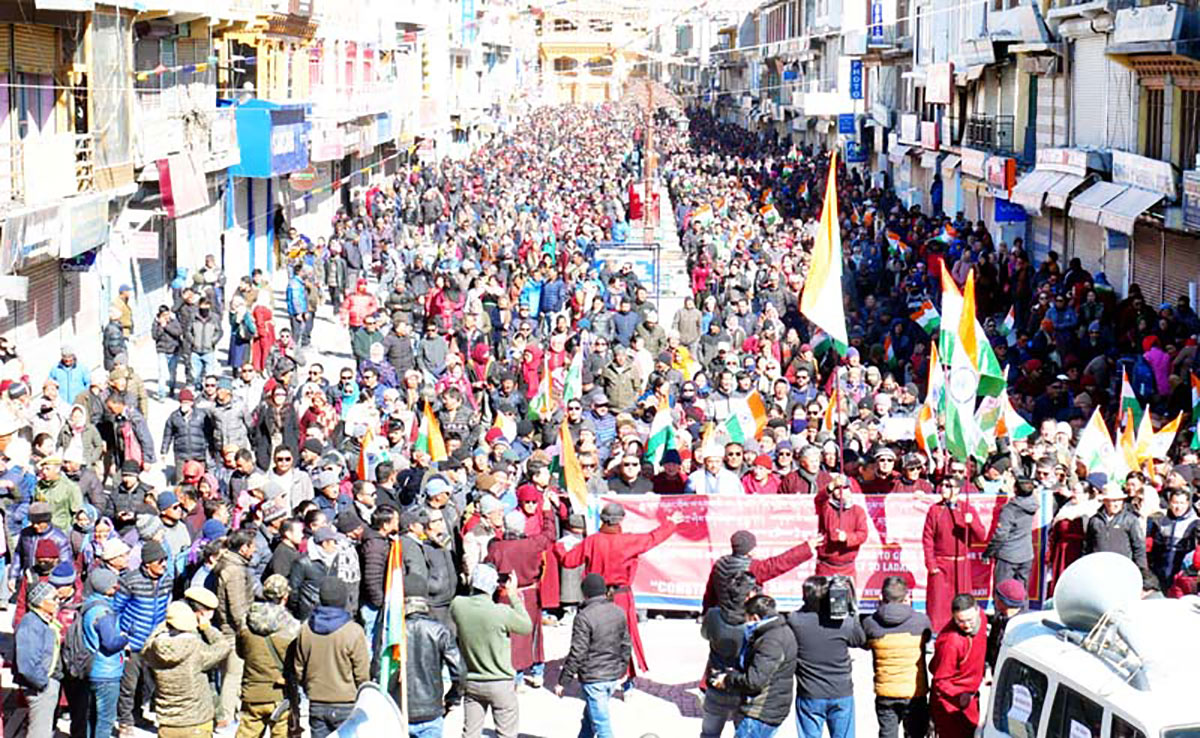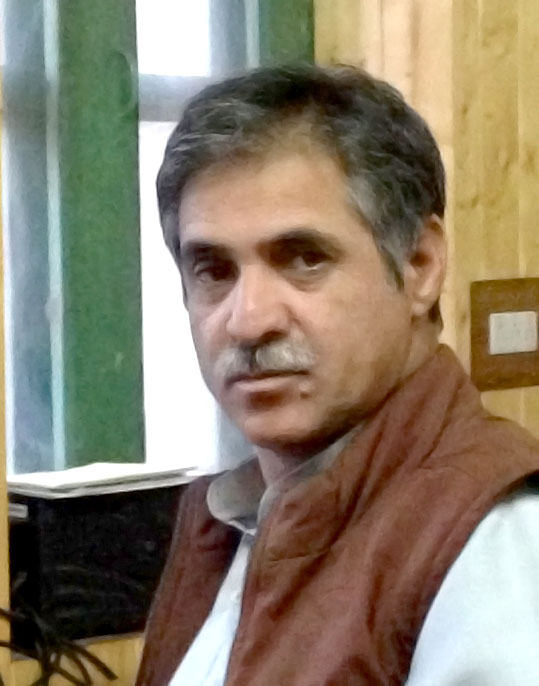by Masood Hussain

The binning of Jammu and Kashmir’s hollowed special status and bifurcation of the state into two federally administered Union Territories was primarily aimed at managing Kashmir. Going by all statements that the ministers in Delhi are making for the last many months, the valley is calm and quiet, no stone-throwing instances, no militant violence and no political activity by any party other than BJP.
Kashmir has stopped creating good or bad news. Most of the news about Kashmir now comes from Delhi, Islamabad or the capital of world politics.
But that is not the case in the UT of Leh or the Jammu part of the UT of Jammu and Kashmir. They have issues and they come out on roads.
Reported by quite a few media, there were two major protests in Leh last week.
On January 13, various students of the desert region came together under the banner of Students Organization of Unified Ladakh (SOUL) and moved on streets with the demand for inclusion of UT of Ladakh in the Sixth Schedule. The student group sat on a protest in a tent near the Old Bus Stand to demand to safeguard Ladakh’s identity.
The peaceful protest saw a lot of music and folk songs being relaying throughout its march from the NDS Ground to the Balkhang Chowk in Main Bazaar. They played a skit to communicate the requirement of protecting the culture, unique to the region.
Rigzen Dorjay, the SOUL President in his brief speech questioned the silence of Ladakh MP Jamyang Tsering Namgyal and other Ladakh leaders over the issues that Ladakh faces after it emerged as the UT, without an assembly. Dorjey said region’s culture, language, ecology and all its distinct facets of life can be protected only by the sixth Schedule.
Almost five days later, Ladakh Buddhist Association Leh came out in a massive protest on February 18. Seeking constitutional safeguards, the programme was supported and participated by almost all the religious and political groups including Muslims and Christians. It culminated in the Polo Ground where organisers thanked the participants and reiterated their demands.

Thanking the Narendra Modi government for acceding to the 71-year old demand for a UT, they told people that they had already sent a 15-point to Delhi through Umang Narula, the adviser to the Lt Governor of Ladakh UT. Articulated by LBA President PT Kunzang, it envisaged demands of land protection, employment and job reservations, protection and preservation of culture, language and ethnicity of Ladakh, protection of fragile ecosystem, protection of interest of the business community, strengthening empowerment, re-organization and delimitation of LAHDC, separate Rajya Sabha seat for Ladakh, complete tax exemption, establishment of Ladakh High Court, inclusion of Bhoti language in the VIII Schedule of the constitution, Caderisation of employees, establishment of Ladakh Public Service Commission, establishment of the long-awaited Minority Commission, protection of the citizenship of the people of Ladakh and promotion of Agriculture sectors.
Unlike Ladakh, Jammu’s tensions are different. A much bigger ethnicity than Ladakh, Jammu’s crises lies in its economic slowdown. Closer to market (read Kashmir) and raw material (rest of the plains), Jammu’s manufacturing sector is facing the music for the last six months because of the slowdown that the lockdown triggered. The latest came on January one, when the single market started operating with the abolition of the Toll Post at Lakhanpur.
As the physical barrier that was key to the protection of the local industry shed its history, it immediately led to the impact on certain things that Jammu was producing and selling within the state. Industry sources said the production has fallen by around 40 per cent and certain sectors like cement and steel have started sending additional workforce home. This impact was visible at a time when the entire administration was shuttling between Jammu, Naglauru, Kolkatta and Mumbai for the roadshows to manage the new investment. Though the new industrial policies on 14 key sectors are yet to become public, the successful units that came up on the basis of the earlier policy are gradually getting into the red.
This is expected to have a huge impact on the well being of Jammu that is now being bypassed by the Vaishno Devi pilgrims.
The crisis was felt by the policymakers only on February 18, when a government order announced the setting up of a high-powered committee constituted to assess the impact of the abolition of various Toll Posts on the local industries. Rohit Kansal, the spokesman of the UT government said the Rs 1500 crore loss to the public kitty by the abolition of the Post would now lead to the development of vibrant, modern and competitive industrial and manufacturing sector in Jammu and Kashmir. The Bari Brahmana Industries Association, the main manufacturing hub, had warned that the toll post eraser is an attempt at the destruction of the industrial sector of J&K.
Almost two months later, a committee would look into the hurt the celebratory intervention caused.
In comparison, Kashmir has quietly landed in a greenhouse. With politics, internet and the movement highly regulated, there are not issues that may require any debate or discussion. As life discovers the basic auto-pilot mode, there are not any murmurs against the Murmu administration in real or in virtual Kashmir. Perhaps that is why for the first time Ladakh and Jammu have started fighting their own case.














